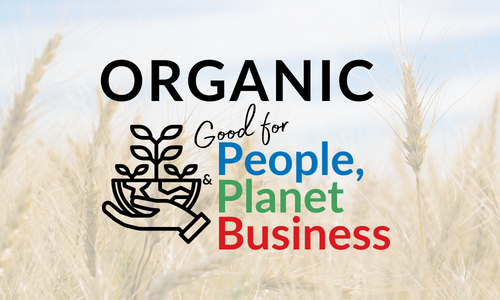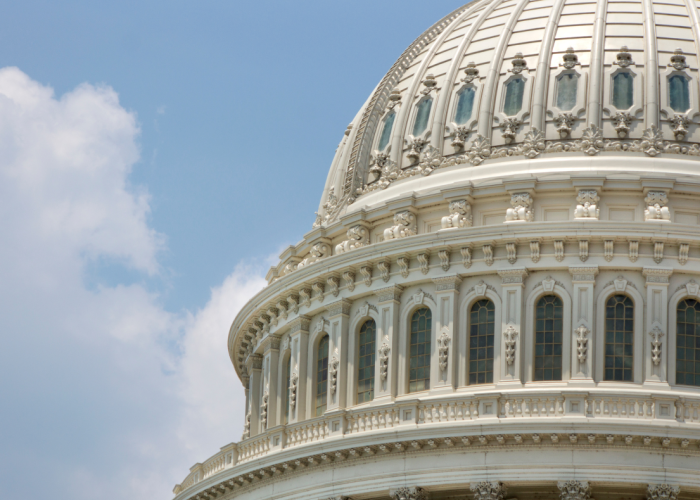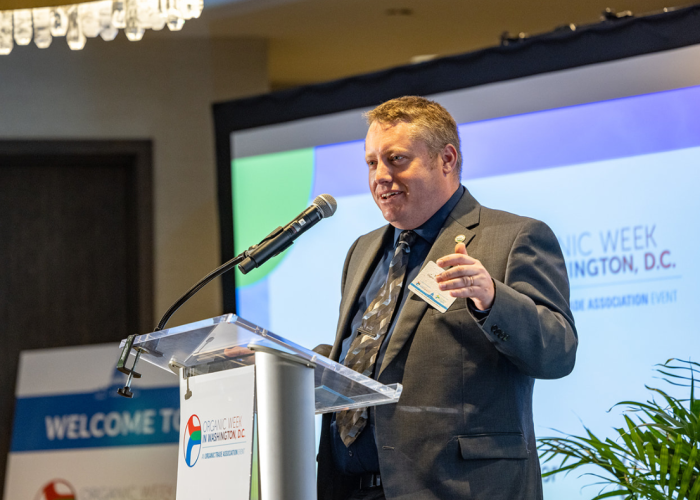On July 14, 2016, OTA's CEO and Board President sent the following message to the membership regarding the federal GMO labeling bill known as the Stabenow Roberts compromise.
Dear OTA Members,
We are reaching out to you for the second time this month on GMO labeling to help add some context to this complicated and critical issue impacting organic. Today, the House of Representatives passed, unchanged, the GMO labeling bill that cleared the Senate last week- known as the Stabenow Roberts compromise. As in the Senate, the bill passed the House by a large margin—a vote of 306 to 117. The White House has announced the President will sign the bill.
Many impassioned activists, and a few OTA members, that have long contributed to this fight are dismayedc by OTA’s choice to support the bill. Many more OTA members have expressed an understanding for the hard choices and disappointments that accompany making tough choices. The nature of compromise, which does lead to progress, is that you don’t get everything you want. And this is no different.
A compromise GMO labeling bill was happening, with or without us. Not protecting the core value of the organic label would have been risky and wrong for an association whose mission is to protect the value of organic.
It is impossible to measure what could have been, but we simply could not take the risk of not protecting organic. OTA appreciates Senator Stabenow for championing the USDA Organic seal, and for protecting organic as the original assurance of non-GMO ingredients and more, while crafting this mandatory federal solution to GMO labeling.
Each of these real risks to organic was mitigated in the compromise legislation:
- The risk of conventional products, exempted from GMO labeling, carrying a bogus, misleading and meaningless non-GMO claim in the marketplace – such as milk from a cow that has been fed nothing but GMO feed appearing side-by-side on the shelf as “non-GMO” next to organic milk.
- The risk of organic products being unable to make a legal non-GMO claim in the market due to current conflicting policies from FDA and USDA.
- The risk of defining biotechnology in a way that reaches beyond labeling, so that the National Organic Program’s ability to define GMOs as excluded methods based on organic stakeholder input would be limited.
Keeping organic strong as THE alternative to chemical food and farming is our top priority. Our mission is to protect organic agriculture and trade, and we have to take the long view to achieve that mission.
The bill has its flaws, as is true of any compromise that can become law. Most notably, it includes an option to reveal the presence of GMOs through technology that would require a smartphone and internet access. OTA rejects that option and commends Just Label It (JLI) for its continued work to urge the marketplace to make the right choice for consumers by choosing to print a simple and clear statement of GMO content on the product label. This is the most effective and transparent way to communicate with consumers.
But this bill does go a long way to increased clarity for consumers. It covers thousands more products than Vermont’s GMO labeling law and other state initiatives. Senators Leahy and Stabenow confirmed in a formal discussion on the floor of the Senate the extent of the bill’s coverage, and reinforced USDA’s legal interpretation and the intent of Congress.
This bill will not allow products that are exempt from informing consumers about their GMO content to automatically slap on a non-GMO claim. And it makes a huge advance in recognizing and safeguarding USDA certified organic as the gold standard for transparency and non-GMO status.
This bill also protects the organic standards from any weakening by the implementation of the GMO labeling program. Senators Baldwin and Stabenow, in a formal discussion on the floor of the Senate, clarified that the organic standard maintains its own definition for GMOs as an excluded and prohibited method.
Emotions are running high in this debate, and we encourage everyone to look beyond the obvious outrage and dig into the facts. Read the Stabenow-Roberts compromise bill and the Vermont law, and look to organizations like the Environmental Working Group to analyze the details as we all prepare to turn our attention to USDA’s implementation of the law. There is much work to be done. First and foremost, we will need to hold USDA accountable to develop regulations aligned with the legal assessment of the scope of the law’s definitions. Also, we will need to ensure a credible assessment of the feasibility of the technology labeling option (aka QR codes) in year one.
We all agree the food and agriculture system needs major change—it’s what we all work for. We won’t agree on each and every incremental step to that end, but hope the tent can be big enough to accommodate all who care. If the food movement chooses strife over progress and punishes alternate views held by those dedicated to the same objectives, we’ve already lost. But we’re optimistic, and so much has already changed in the power structures of food and agriculture. The dedicated work in Vermont and other states is part of what forced acceptance of national mandatory disclosure—even if imperfect.
Going forward, we may not get everything we want, but no longer will the “old guard” in food and agriculture be the only dominant players. And credit for that goes to the impassioned activists and also the dedicated organic farmers, ranchers and food makers doing the hard work on the ground every day to make sure consumers have a choice to turn to. As progress marches or crawls forward (depending on your view), we know organic will be protected in the process.
When faced with tough deliberations, we look to our mission and policies. This bill protects organic in the marketplace. It reinforces organic as the original non-GMO market claim, and assures consumers that USDA Organic is the simplest and surest way to guarantee no GMOs, no toxic pesticides, and so much more. This is an important protection for organic, and one that allows us to continue focusing on promoting and growing the organic market, converting more acres to organic, and focusing our efforts on advocating for organic in the next Farm Bill and beyond.
Protecting organic. Promoting organic. Our mission.

Laura Batcha
CEO/Executive Director, Organic Trade Association
Melissa Hughes
OTA Board President
General Counsel & Director of Government Relations, Organic Valley










